-
 Bitcoin
Bitcoin $82,770.9885
-0.53% -
 Ethereum
Ethereum $1,811.0838
-0.62% -
 Tether USDt
Tether USDt $0.9996
-0.01% -
 XRP
XRP $2.0610
1.56% -
 BNB
BNB $591.5998
-0.12% -
 USDC
USDC $0.9999
0.00% -
 Solana
Solana $116.7637
-3.59% -
 Dogecoin
Dogecoin $0.1606
-2.58% -
 Cardano
Cardano $0.6491
0.00% -
 TRON
TRON $0.2375
1.32% -
 Toncoin
Toncoin $3.6204
-7.56% -
 UNUS SED LEO
UNUS SED LEO $9.4063
0.23% -
 Chainlink
Chainlink $12.8000
-2.19% -
 Stellar
Stellar $0.2605
1.01% -
 Avalanche
Avalanche $18.1124
-1.26% -
 Sui
Sui $2.2384
-2.51% -
 Shiba Inu
Shiba Inu $0.0...01223
0.65% -
 Hedera
Hedera $0.1627
0.30% -
 Polkadot
Polkadot $4.0538
1.44% -
 Litecoin
Litecoin $82.9722
0.02% -
 MANTRA
MANTRA $6.4051
3.36% -
 Bitcoin Cash
Bitcoin Cash $301.6530
1.88% -
 Bitget Token
Bitget Token $4.4826
-1.05% -
 Dai
Dai $1.0000
0.02% -
 Ethena USDe
Ethena USDe $0.9995
-0.02% -
 Monero
Monero $212.5474
-1.93% -
 Hyperliquid
Hyperliquid $11.6624
-5.49% -
 Pi
Pi $0.5680
-13.45% -
 Uniswap
Uniswap $5.8333
-1.59% -
 Aptos
Aptos $5.0533
-1.32%
What does blockchain mean and how does it achieve transparency and anonymity?
Blockchain ensures transparency through a public ledger and consensus, while maintaining anonymity via cryptographic addresses and encryption.
Apr 03, 2025 at 11:28 am
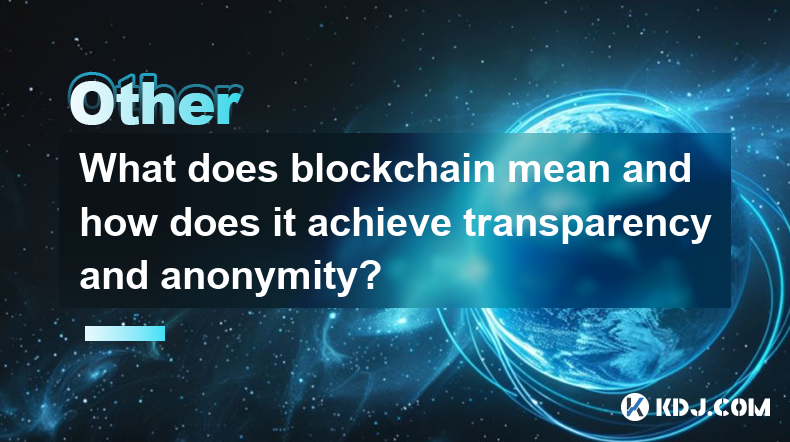
Blockchain technology is a decentralized, distributed ledger that records transactions across numerous computers. It ensures that once data is recorded, it cannot be altered retroactively without the alteration of all subsequent blocks and the consensus of the network. This technology underpins cryptocurrencies like Bitcoin and Ethereum, providing a secure and transparent way to conduct transactions without the need for a central authority.
The concept of blockchain was introduced with Bitcoin in 2009 by an individual or group using the pseudonym Satoshi Nakamoto. Since then, it has evolved into a foundational technology for various applications beyond cryptocurrencies, including smart contracts, supply chain management, and more. The core idea behind blockchain is to create a system where trust is established through cryptographic means rather than through a central authority.
How Blockchain Achieves Transparency
Blockchain achieves transparency through its decentralized nature and the public availability of its ledger. Every participant in the network has access to the entire history of transactions, which are recorded in blocks. These blocks are linked together in a chain, hence the name blockchain. Each block contains a list of transactions, a timestamp, and a cryptographic hash of the previous block, ensuring the integrity of the data.
- Public Ledger: All transactions are recorded on a public ledger that anyone can view. This means that anyone can verify the transactions that have taken place, ensuring transparency.
- Immutable Records: Once a transaction is recorded on the blockchain, it cannot be altered. This immutability ensures that the history of transactions remains transparent and verifiable.
- Consensus Mechanisms: Blockchain networks use consensus mechanisms like Proof of Work (PoW) or Proof of Stake (PoS) to validate transactions. These mechanisms ensure that all participants agree on the state of the ledger, further enhancing transparency.
How Blockchain Achieves Anonymity
While blockchain is transparent, it also offers a level of anonymity that is crucial for many users. This anonymity is achieved through the use of cryptographic addresses rather than personal information. When a user initiates a transaction, they use their public key to create a unique address, which is visible on the blockchain but does not reveal their identity.
- Pseudonymity: Users are identified by their public keys, which are long strings of characters. These keys are pseudonymous, meaning they do not directly reveal the user's real-world identity.
- Encryption: Transactions are encrypted and can only be decrypted by the recipient using their private key. This ensures that the content of the transaction remains private.
- Mixing Services: Some users employ mixing services or tumblers to further enhance their anonymity. These services mix the user's coins with others, making it difficult to trace the origin of the funds.
The Role of Nodes in Blockchain
Nodes are crucial to the operation of a blockchain network. They are computers that maintain a copy of the blockchain and validate transactions. Each node independently verifies the transactions and ensures that they adhere to the rules of the network. This decentralized validation process is what makes blockchain secure and transparent.
- Full Nodes: These nodes store the entire history of the blockchain and validate all transactions. They play a critical role in maintaining the integrity of the network.
- Light Nodes: These nodes store only a subset of the blockchain data and rely on full nodes for validation. They are useful for users who want to interact with the blockchain without storing the entire ledger.
- Mining Nodes: In networks that use Proof of Work, mining nodes compete to solve complex mathematical problems to validate transactions and add new blocks to the blockchain. They are rewarded with cryptocurrency for their efforts.
Smart Contracts and Blockchain
Smart contracts are self-executing contracts with the terms of the agreement directly written into code. They run on blockchain platforms like Ethereum and automate the execution of agreements between parties. Smart contracts enhance the transparency and efficiency of transactions by eliminating the need for intermediaries.
- Automated Execution: Once the conditions of a smart contract are met, it automatically executes the agreed-upon actions. This reduces the risk of fraud and ensures that all parties adhere to the terms.
- Transparency: The code of a smart contract is visible on the blockchain, allowing anyone to verify its functionality. This transparency ensures that the contract operates as intended.
- Immutable: Once deployed, a smart contract cannot be altered, ensuring that the terms remain unchanged and transparent to all parties involved.
Blockchain and Cryptocurrency
Cryptocurrencies are digital or virtual currencies that use blockchain technology to secure their transactions. Bitcoin, the first and most well-known cryptocurrency, introduced the concept of blockchain to the world. Since then, thousands of other cryptocurrencies have been developed, each with its own unique features and use cases.
- Decentralization: Cryptocurrencies operate on decentralized networks, meaning they are not controlled by any single entity. This decentralization is a key feature of blockchain technology.
- Security: The cryptographic nature of blockchain ensures that transactions are secure and cannot be altered once recorded. This security is crucial for the trustless nature of cryptocurrencies.
- Transparency: All cryptocurrency transactions are recorded on the blockchain, making them transparent and verifiable by anyone. This transparency is a fundamental aspect of blockchain technology.
Challenges and Limitations of Blockchain
While blockchain offers numerous benefits, it also faces several challenges and limitations. Understanding these can provide a more comprehensive view of the technology and its potential applications.
- Scalability: One of the main challenges of blockchain is scalability. As the number of transactions increases, the network can become congested, leading to slower transaction times and higher fees.
- Energy Consumption: Proof of Work, the consensus mechanism used by Bitcoin and other cryptocurrencies, requires significant computational power and energy. This has led to concerns about the environmental impact of blockchain technology.
- Regulatory Uncertainty: The regulatory environment for blockchain and cryptocurrencies is still evolving. This uncertainty can pose challenges for businesses and individuals looking to adopt the technology.
- Privacy Concerns: While blockchain offers anonymity, it is not entirely private. Advanced analysis techniques can sometimes be used to trace transactions back to their origin, raising privacy concerns.
Future of Blockchain
The future of blockchain technology is promising, with ongoing research and development aimed at addressing its current limitations and expanding its applications. Innovations in consensus mechanisms, scalability solutions, and privacy enhancements are paving the way for broader adoption across various industries.
- Layer 2 Solutions: Technologies like the Lightning Network for Bitcoin and sidechains for Ethereum aim to improve scalability by processing transactions off the main blockchain.
- Interoperability: Projects like Polkadot and Cosmos are working on creating interoperable blockchains, allowing different networks to communicate and share data seamlessly.
- Privacy Enhancements: New cryptographic techniques, such as zero-knowledge proofs, are being developed to enhance the privacy of blockchain transactions without compromising transparency.
- Decentralized Finance (DeFi): Blockchain is enabling the growth of decentralized finance, offering new ways to lend, borrow, and trade assets without traditional financial intermediaries.
Common Questions Related to Blockchain, Transparency, and Anonymity
Q: What is the main difference between transparency and anonymity in blockchain?
A: Transparency in blockchain refers to the public availability of transaction data, allowing anyone to verify the history of transactions. Anonymity, on the other hand, refers to the ability of users to conduct transactions without revealing their real-world identities. Blockchain achieves both through the use of public ledgers and cryptographic addresses.
Q: How does blockchain ensure the security of transactions?
A: Blockchain ensures the security of transactions through cryptographic means and consensus mechanisms. Each transaction is encrypted and linked to the previous transaction in a block, making it nearly impossible to alter without the consensus of the network. Consensus mechanisms like Proof of Work or Proof of Stake further validate transactions, ensuring their integrity.
Q: Can blockchain be used for purposes other than cryptocurrencies?
A: Yes, blockchain has numerous applications beyond cryptocurrencies. It can be used for smart contracts, supply chain management, voting systems, identity verification, and more. The technology's ability to provide transparency, security, and decentralization makes it suitable for a wide range of industries.
Q: What are the main challenges facing blockchain adoption?
A: The main challenges include scalability, high energy consumption, regulatory uncertainty, and privacy concerns. Efforts are underway to address these issues through technological innovations and regulatory frameworks.
Q: How do smart contracts enhance the transparency of blockchain?
A: Smart contracts enhance transparency by having their code visible on the blockchain, allowing anyone to verify their functionality. They automate the execution of agreements, reducing the risk of fraud and ensuring that all parties adhere to the terms, which are transparent and immutable.
Q: What is the role of nodes in a blockchain network?
A: Nodes are computers that maintain a copy of the blockchain and validate transactions. Full nodes store the entire history of the blockchain, while light nodes store only a subset. Mining nodes in Proof of Work networks validate transactions and add new blocks to the blockchain, ensuring its security and integrity.
Q: How does blockchain achieve anonymity while maintaining transparency?
A: Blockchain achieves anonymity through the use of cryptographic addresses, which are pseudonymous and do not reveal the user's real-world identity. Transactions are encrypted, and mixing services can be used to further enhance anonymity. At the same time, the public ledger ensures transparency by allowing anyone to verify the history of transactions.
Q: What are some future developments expected in blockchain technology?
A: Future developments include layer 2 solutions for scalability, interoperability between different blockchains, privacy enhancements through new cryptographic techniques, and the growth of decentralized finance (DeFi). These innovations aim to address current limitations and expand the applications of blockchain technology.
Disclaimer:info@kdj.com
The information provided is not trading advice. kdj.com does not assume any responsibility for any investments made based on the information provided in this article. Cryptocurrencies are highly volatile and it is highly recommended that you invest with caution after thorough research!
If you believe that the content used on this website infringes your copyright, please contact us immediately (info@kdj.com) and we will delete it promptly.
- How XRPL Utility Can Support Token Price Growth
- 2025-04-04 05:35:12
- Long-dormant Bitcoin wallets have suddenly sprung to life
- 2025-04-04 05:35:12
- ExoraPad ($EXP), an innovative AI-powered launchpad exclusively developed for the XRP Ledger (XRPL), has reached an impressive milestone
- 2025-04-04 05:30:12
- XRP Price Surge Could Enable Early Retirement for Numerous Investors
- 2025-04-04 05:30:12
- XRP Price Prediction: Will XRP Bounce From This Support Or Continue Its Descent?
- 2025-04-04 05:25:12
- As US Treasury yields hit 6-month lows, Bitcoin (BTC) price may be poised for a breakout
- 2025-04-04 05:25:12
Related knowledge
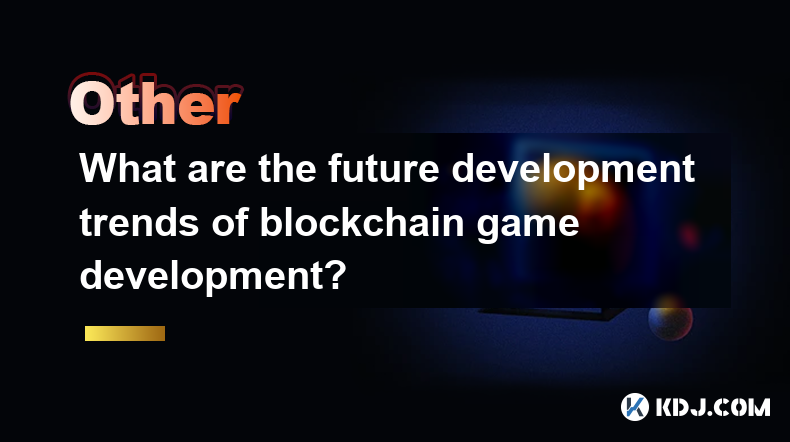
What are the future development trends of blockchain game development?
Apr 03,2025 at 05:00am
Blockchain technology has revolutionized various industries, and gaming is no exception. As we look to the future, several trends are set to shape the development of blockchain games. These trends not only promise to enhance the gaming experience but also to integrate blockchain technology more seamlessly into the gaming ecosystem. Let's explore these t...
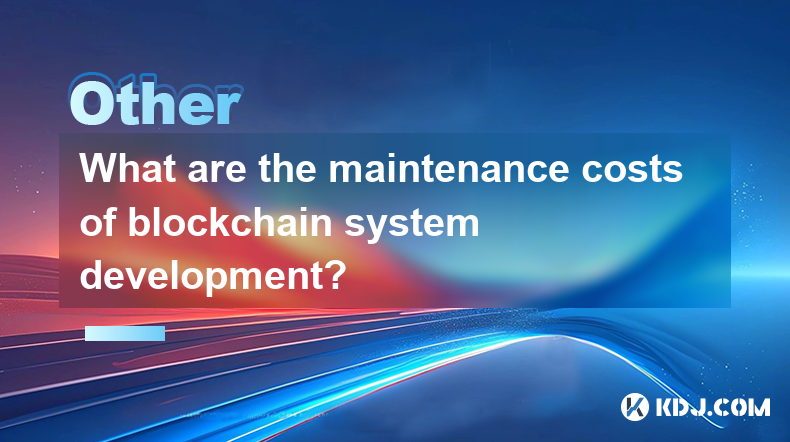
What are the maintenance costs of blockchain system development?
Apr 03,2025 at 06:07pm
The maintenance costs of blockchain system development are multifaceted and depend on various factors. These costs can include technical maintenance, security updates, infrastructure expenses, and personnel costs. Understanding these elements is crucial for anyone planning to develop or maintain a blockchain system. Technical MaintenanceTechnical mainte...
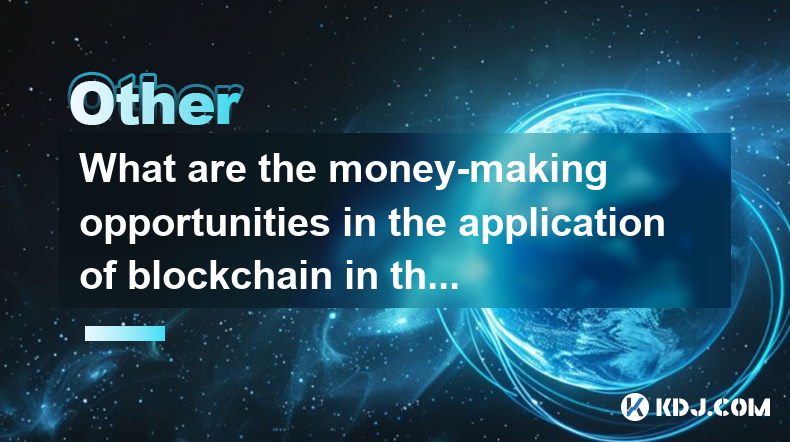
What are the money-making opportunities in the application of blockchain in the medical industry?
Apr 03,2025 at 03:35am
The integration of blockchain technology into the medical industry presents a myriad of money-making opportunities that can revolutionize healthcare systems. Blockchain's inherent characteristics, such as transparency, security, and immutability, make it an ideal solution for various medical applications. By leveraging blockchain, companies can develop ...
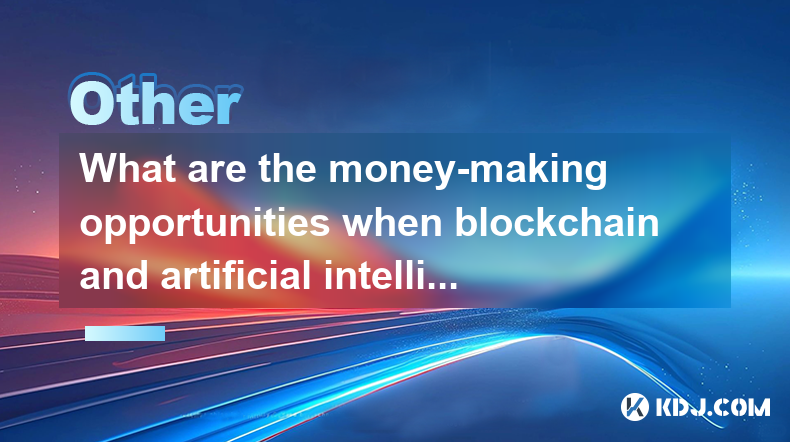
What are the money-making opportunities when blockchain and artificial intelligence are combined?
Apr 04,2025 at 01:28am
The convergence of blockchain and artificial intelligence (AI) presents a myriad of money-making opportunities within the cryptocurrency circle. This fusion leverages the decentralized and secure nature of blockchain with the analytical prowess of AI, creating innovative solutions and platforms that can generate significant revenue. From enhancing tradi...
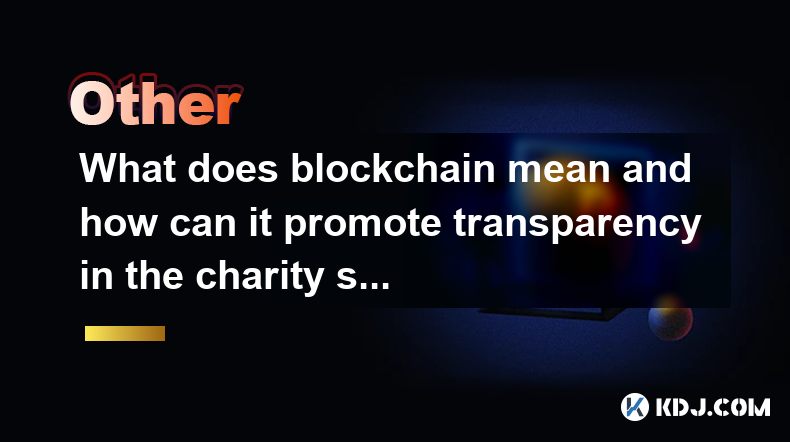
What does blockchain mean and how can it promote transparency in the charity sector?
Apr 03,2025 at 08:29pm
Blockchain technology is a decentralized, distributed ledger that records transactions across numerous computers. This ensures that the data is transparent and nearly impossible to alter retroactively. Essentially, blockchain serves as a digital ledger of all cryptocurrency transactions, enabling secure and direct exchanges without the need for intermed...
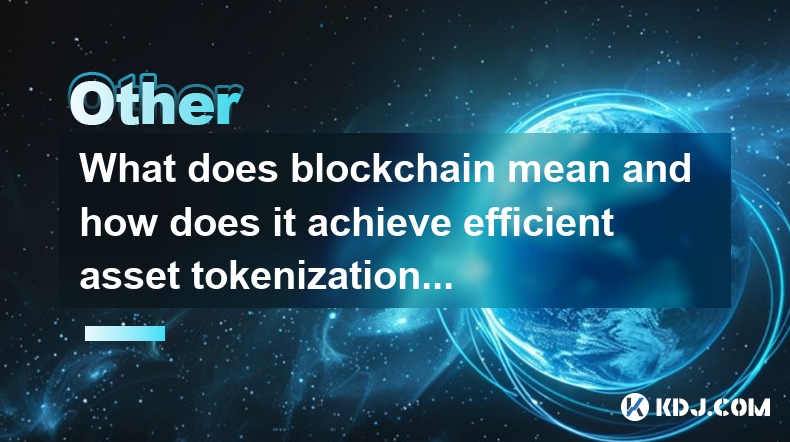
What does blockchain mean and how does it achieve efficient asset tokenization?
Apr 03,2025 at 07:57pm
Blockchain technology is a decentralized, distributed ledger that records transactions across numerous computers. It ensures that each transaction is secure, transparent, and immutable. The concept of blockchain was introduced with the launch of Bitcoin in 2009, but its applications have since expanded far beyond cryptocurrencies. At its core, blockchai...

What are the future development trends of blockchain game development?
Apr 03,2025 at 05:00am
Blockchain technology has revolutionized various industries, and gaming is no exception. As we look to the future, several trends are set to shape the development of blockchain games. These trends not only promise to enhance the gaming experience but also to integrate blockchain technology more seamlessly into the gaming ecosystem. Let's explore these t...

What are the maintenance costs of blockchain system development?
Apr 03,2025 at 06:07pm
The maintenance costs of blockchain system development are multifaceted and depend on various factors. These costs can include technical maintenance, security updates, infrastructure expenses, and personnel costs. Understanding these elements is crucial for anyone planning to develop or maintain a blockchain system. Technical MaintenanceTechnical mainte...

What are the money-making opportunities in the application of blockchain in the medical industry?
Apr 03,2025 at 03:35am
The integration of blockchain technology into the medical industry presents a myriad of money-making opportunities that can revolutionize healthcare systems. Blockchain's inherent characteristics, such as transparency, security, and immutability, make it an ideal solution for various medical applications. By leveraging blockchain, companies can develop ...

What are the money-making opportunities when blockchain and artificial intelligence are combined?
Apr 04,2025 at 01:28am
The convergence of blockchain and artificial intelligence (AI) presents a myriad of money-making opportunities within the cryptocurrency circle. This fusion leverages the decentralized and secure nature of blockchain with the analytical prowess of AI, creating innovative solutions and platforms that can generate significant revenue. From enhancing tradi...

What does blockchain mean and how can it promote transparency in the charity sector?
Apr 03,2025 at 08:29pm
Blockchain technology is a decentralized, distributed ledger that records transactions across numerous computers. This ensures that the data is transparent and nearly impossible to alter retroactively. Essentially, blockchain serves as a digital ledger of all cryptocurrency transactions, enabling secure and direct exchanges without the need for intermed...

What does blockchain mean and how does it achieve efficient asset tokenization?
Apr 03,2025 at 07:57pm
Blockchain technology is a decentralized, distributed ledger that records transactions across numerous computers. It ensures that each transaction is secure, transparent, and immutable. The concept of blockchain was introduced with the launch of Bitcoin in 2009, but its applications have since expanded far beyond cryptocurrencies. At its core, blockchai...
See all articles






















































































